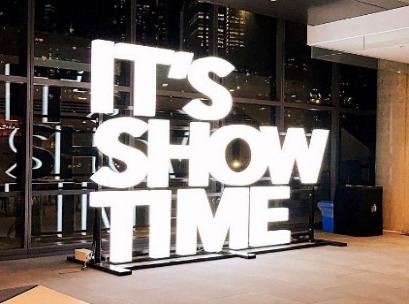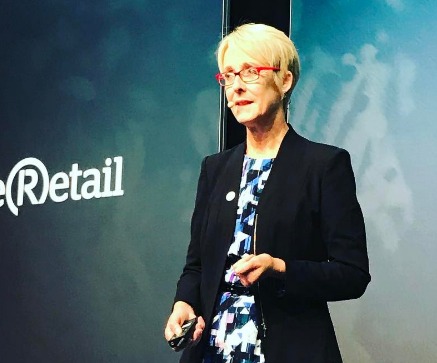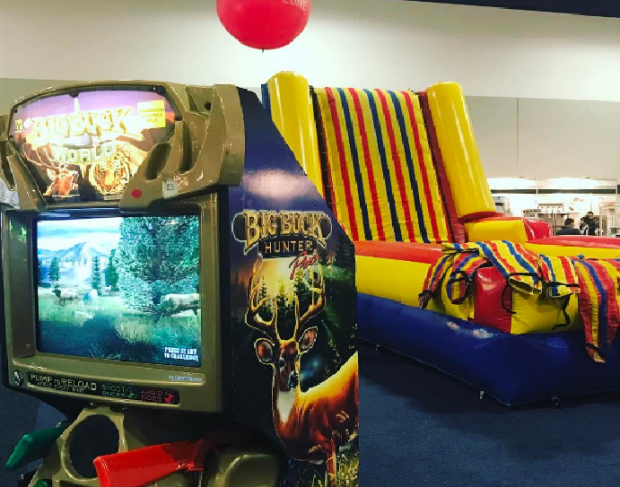 Inside Retail Live – the festival of retail ideas – has kicked off with a host of speakers, roundtables and entertainment bringing the retail executive community together at the International Convention Centre in Sydney.
Inside Retail Live – the festival of retail ideas – has kicked off with a host of speakers, roundtables and entertainment bringing the retail executive community together at the International Convention Centre in Sydney.
The day began with Octomedia chairman and Catch Group CEO Nati Harpaz opening the event by addressing the influx of international competition into the Australian retail market,
Off the back of Catch Group’s acquisition of Pumpkin Patch last week, Harpaz told the room that owning a product from supply chain to retail operation is a keystone of modern retail.
“Customers want good products for the best prices.”
“International competitors sell the same products at a cheaper price, with a better supply chain.”
Russel Howcroft, chief creative officer of PricewaterhouseCoopers then delivered his keynote speech, starting off by asking whether Australia is a “cappuccino economy”.
“Surely there are more ideas in retail than cappuccino, but that seems to be the operating theory that most of us are putting into business,” he said.
“Is this because we’ve got everything we need or because we haven’t generated innovation.”
“Where’s the interesting innovation getting me to buy hard goods?”
This was followed by a bumper panel focused on customer experiences ‘beyond smiles per square metre’ featuring Russel Howcroft, chief creative officer, PwC; Danny Lattouf, board director POPAI ANZ; Eloise Monaghan, MD, Honey Birdette; Tim Cockayne, CEO, Total Tools; John Vary, innovation manager, John Lewis and Stephen Younane, CEO, Retail Prodigy Group.
Lattouf had nothing but admiration for the Honey Birdette retail model, recounting his own recent experience with the brand.
“I went into the store with sweaty palms and didn’t know what to expect, but I was intruiged and heard of the amazing success story so I expected great things,” Lattouf tells the audience.
“It was the staff that were the absolute pinnacle of that experience. They talked about toys as if they were tools, they spoke to the facts, and they spoke about the product intimately – the sweat disappeared and I got comfortable.”
John Vary detailed John Lewis’ approach to putting the customer first, telling the audience that understanding empathy is the key to curating experiences. John Lewis are working to blur the lines between physical and digital retail environments to create a channel-agnostic business.
“We don’t want to have channels, it’s just shopping, so for us its about curating all those experiences for the customer,” he said.
The next panel of the day had the hot topic of customer acquisition – what the challenges and opportunities for retailers are. Monash University associate professor Sean Sands lead the discussion with the likes of Elle Roseby, general manager of Supre, Douglas Nicol, founder of OnMessage, and James Boysons, Google Australia’s retail industry manager on hand to talk about the need for simplicity amidst the multi-faceted complexities of retail.

Where’s the buy button in your brain?
Dr. Jenny Brockis, The Brain Fitness Doctor, asked the audience, “what motivates us to buy?”.
“We love that experience, we love that heady time when we go to the shops and make that decision we feel comfortable,” she said.
“But times are tough and times are changing, and it’s getting harder than ever to get people to even come into your store – what could you be doing differently to really get and understand what customers are looking for?”
Brockis noted that understanding the customer requires establishing deep and meaningful connections. Retailers are in the business of relationships and neuroscience can provide a glimpse into what might be going on inside the consumers head.
“There are three primary objectives in the brain. Keep safe, find the reward and to always save energy.”
Just before the break for lunch, Jeremy Meltzer, CEO of i=Change took to the stage with insights into how retailers embed themselves in the community by giving back. Inside Retail is donating $2 to i=Change for every ticket purchase and $1 for every registeration at the event.
Lunch featured the Funky Love Squad with entertainers on stilts to keep the expo hall jovial while more frank discussions and networking took place at the round tables in the Retail Theatre.
Jon Bird, MD, Labstore Global resumed activities on the speaking stage post lunch and asked how excited people were about Amazon coming to Australia – with a scarce amount of hands going up.
It’s a sea change for retail globally, Bird says, although Australians haven’t “seen anything yet”.
Pointing to the Christmas sales slump for bricks and mortar retailers in the US, Bird draws a comparison to Black Friday and Cyber Monday, which are experiencing double digit growth in America.
There aren’t many retailers in the US growing, bar Amazon – who Bird also notes are, by far, the most valuable global retail brand (Alibaba are second).
The question then, Bird contends, is what can we learn from the American ecommerce giant and other forward thinking brands?
“I’m one, and as you get comfortable with it you buy everything with Amazon.”
“The way I used to feel about Apple is the way I now feel about Amazon.”
An ex-Walmart executive recently told Bird to forget the moment of truth, which has been a stalwart of retail concepualisation for years. He says that Amazon are “creating a perpetual moment of truth”.

We then had Stylerunner founder Julie Stevanja, Dymocks managing director Steve Cox and Sumosalad chief customer officer Laurence Mitchell on the stage to talk about customer engagement.
“We’re happy for customers to talk to us one-on-one, but it has to be relevant to the customer as an individual, so as a retailer it’s a real challenge. My SKU count is 34 million, that’s enourmous. How do you match that with one and a half million customers on our database?”, said Cox
Stevanja continued down the same line, noting that the prevelance of bad experiences is actually also an opportunity.
“When you have an upset customer that’s your opportunity to get a loyal customer for life. We cherish those customers because we can show them how are we different to other retailers,” she said.
“Customers expect good service when things go well, but when we bend over backwards when things go wrong we get a really positive response.”
The second segment of the afternoon saw Supergroup PLC CEO Euan Sutherland take to the floor, telling the audience about how the international clothing company navigates the modern retail world.
Gloves off
Daniel Mcmahon, head of retail, APAC, for Thoughtworks and Michael Ginsburg, founder of spending hacker, then went toe-to-toe on the issue of consumer loyalty adjudicated by Con Meninctas, conjoint fellow, University of Newcastle. Mcmahon is a believer, Ginsburg thinks loyalty is dead.
“It pains me to see brands seeing loyalty as something that drives transactions,” Mcmahon said. “Transactions are a poor indicator of loyalty.”
Ginsburg’s key contention: loyalty programs are a waste of money.
We rounded out day one with a panel on Digital featuring Peter Radcliffe, Retail Apparel Group’s head of digital, Has Fakira, head of digital for Caltex, GM of ecommerce for General Pants, Paula Mitchell, and Andrew Smith, director of retail operations at Telstra.
“We’ve spawned a convenience offer that has digital at its core,” Fakira said. “It’s not actually about technology, it’s what you do with it and how it works.”
“We’ve adopted human centred design technology to create an enviroment where people are focused on what customers actually need.”
It all kicks off again bright and early at 8am tomorrow for day two, which is dedicated to retail leadership, management and expansion. We’ve got retail veterans Paul Zahra and Lou Jardin, as well as disruptive figures like Lana Hopkins of Mon Purse.
Follow us on Twitter @insideretailau
Instagram @insideretail
Linkedin: insideretailoctomedia





